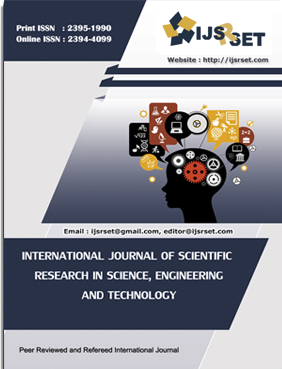Analyzing Land Use and Land Cover Changes and its Dynamics in Mokokchung District, Nagaland.
DOI:
https://doi.org/10.32628/IJSRSET2512111Keywords:
Land Cover, Land Use, Change Analysis, satellite imageAbstract
Land use and land cover are crucial factors in comprehending the interactions of human activities with the environment, and thereby, it is essential to be able to simulate changes.GIS and remote sensing developments have made it possible to map and identify changes in land cover and use. This study aims to assess the changes in the land cover and land use in the Mokokchung District of Nagaland, northeastern India, during a thirty-year period. The analysis shows significant changes in land cover and use. The study used LANDSAT Imageries of 2003 and 2023 obtained from USGS Earth Explorer. Five LULC Classes- Forest, Agriculture, Settlement, Water Bodies, and Barren Land were identified and used to map the entire study area. Forest area cover the maximum total geographical area with 89% followed by built up and agricultural area each covering 5% and 3% of the total geographical area respectively. Over the years forest area has decline significantly whereas built up area has seen a major surge in its area.
Downloads
References
Briassoulis, H. (2011). LAND USE, LAND COVER AND SOIL SCIENCES – Vol. I-Factors Influencing Land-Use and Land-Cover Change.
EPA (2021). United States Environmental Protection Agency, https://www.epa.gov/report-environment/land-cover
CCSP, (2003). Strategic Plan for the U.S. Climate Change ScienceProgram. Final report.
Dregne, H.E. and Chou, N.-T. (1992). Global desertificationdimensions and costs. In: Degradation and restoration of arid lands. Lubbock: Texas Tech. University
J.E. Cohen. 2004. How Many People Can the Earth SAupport? W.W. Norton & Co., New York.
Mundhe, N. N., & Jaybhaye, R. G. (2014). Impact of urbanization on land use/land covers change using Geo-spatial techniques. International Journal of Geomatics and Geosciences, 5, 50-60.
Moulds, S., Buytaert, W. & Mijic, A. (2018).A spatio-temporal land use and land cover reconstruction for India from 1960–2010.
Prasad, P.R. C., Rajan, K. S., Bhole, Vijaya and Dutt C.B.S. (2009). Is Rapid Urbanization Leading to Loss of Water Bodies? Journal of Spatial Science (2009) Vol. II (2), pp. 43-52.
Roy, P.S., Ramachandran, R.M., Paul O., et al. (2022). Anthropogenic land use and land cover changes—a review on its environmental consequences and climate change.
Rozaria, M.M. (2023).A Decadal Study on the Land Use and Land Cover Change Identification along the Nagapattinam and Karaikal Coastal Region of India, Using Remote Sensing and GIS
Sharma, E.A.S.2004. Is rural economy breaking down? – Farmer’s suicides in Andhra Pradesh Economic and Political Weekly, July 10, 2004: pp. 3087-3089.
Turner B.L. II, Skole D., Sanderson S., Fischer G., Fresco L., and Leemans R. (1995). IGBP Report No. 35 and HDP Report No. 7 Land-Use and Land-Cover Change Science/Research Plan
Turner B.L. II, Skole D., Sanderson S., Fischer G., Fresco L., and Leemans R. (1995). IGBP Report No. 35 and HDP Report No. 7 Land-Use and Land-Cover Change Science/Research Plan
Zhang, T., Zhang, X., Xia, D., & Liu, Y. (2014). An analysis of land use change dynamics and its impacts on hydrological processes in the Jialing River Basin. Water, 6(12), 3758–3782.
Downloads
Published
Issue
Section
License
Copyright (c) 2025 International Journal of Scientific Research in Science, Engineering and Technology

This work is licensed under a Creative Commons Attribution 4.0 International License.





